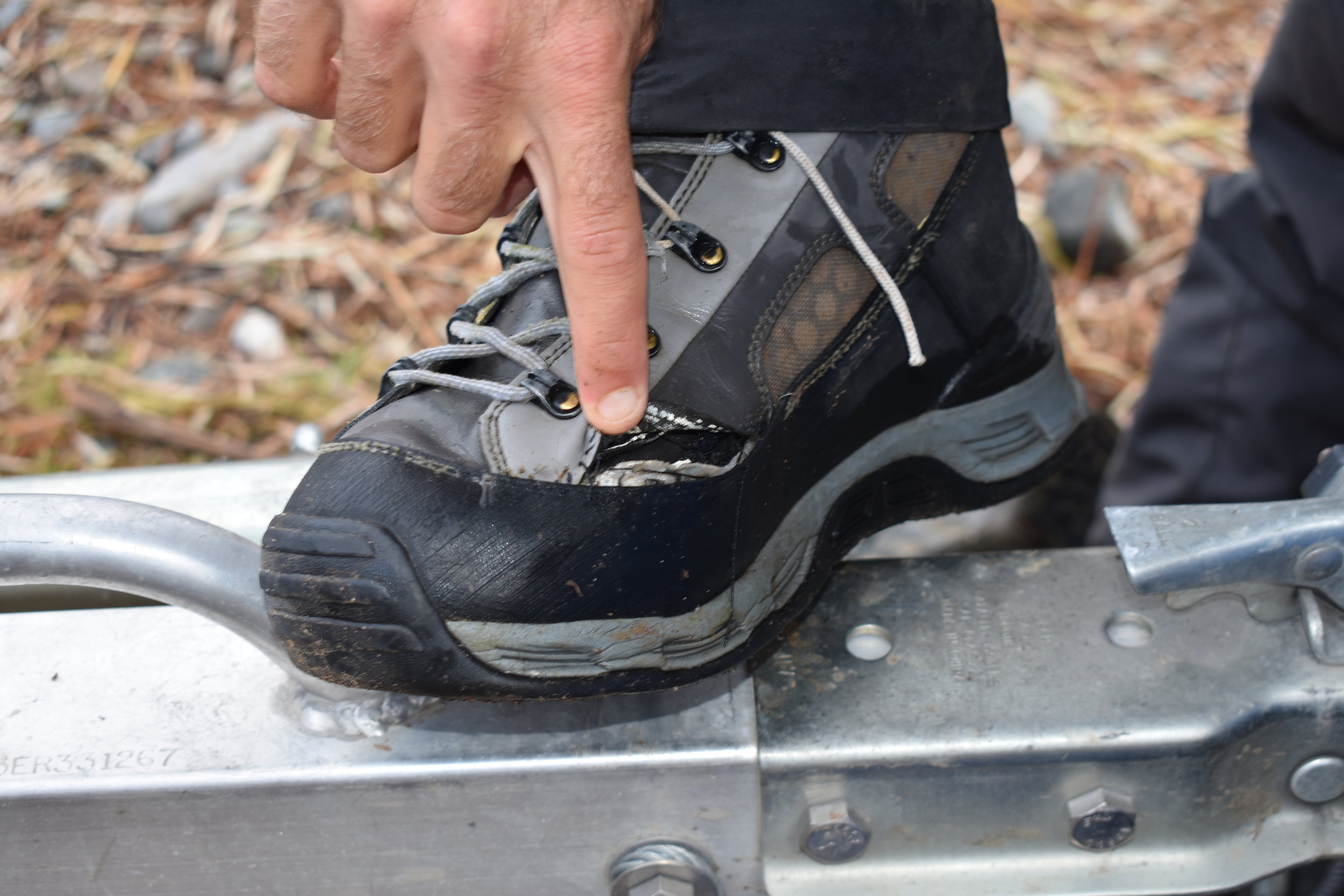I see too often anglers not happy with the fit of their boots. There is really only one top consideration when sizing wading boots, and i’m hoping this tangent can help you find the perfect fit.
Thought one: Go big!
Wading is not a performance fit activity so you don’t need the boot to fit that way. You won’t need to be edging on your big toe like rock climbing, running, jumping, or anything like that. Plod, shuffle, slop is more like it . You’ll be in them all day so go big, your feet will thank you!
Thought two: Always jump up a size. At least!
If you are a 10 or 10.5, go with an 11. At least. You’ll be wearing a light sock, your neoprene booties, maybe thick sock stuffed in there too, so you need a little extra room to get it all in there uncrammed. The space is taken up fast. If it’s a little loose when its just a light sock and waders, tighten the laces a little. Or wear bigger socks…or just be okay with a roomy fit. Trust me, it’s better than too small.
Thought three: Special considerations for cold water wading…
Go even bigger!
The absolute worst is not having enough room for your thick socks. In cold water, constriction is your enemy!
As a guide, I have 2 boots to solve my wading issues. A summer boot, which I upsize 1 and a winter boot, which I Upsize 2. If I could only have one though, I’d go with the bigger one. It’s a little loose when I’m not wearing much on my feet, (like summer wed wading with just my neoprene booties) but a small price to pay compared to a day of cold feet.
In order to keep your feet toasty warm you need loft; , Just as a down jacket won’t work when it’s squeezed flat, neither will those high pile wool socks. My winter system is to have a wool sock and a fleece over sock, and to fit all this high pile stuff in the boot, you have to go big.
Last thought: Loose laces
Another fit mistake I see is people lacing their boots too tight. Again, you do not need a performance fit for lobbing flies out of a drift boat or even stepping down a run. Tightne your boots so they stay on your feet, but keep ‘EM loose, so you can wiggle your toes, stay toasty and fish longer, happier
just my 2 cents…





